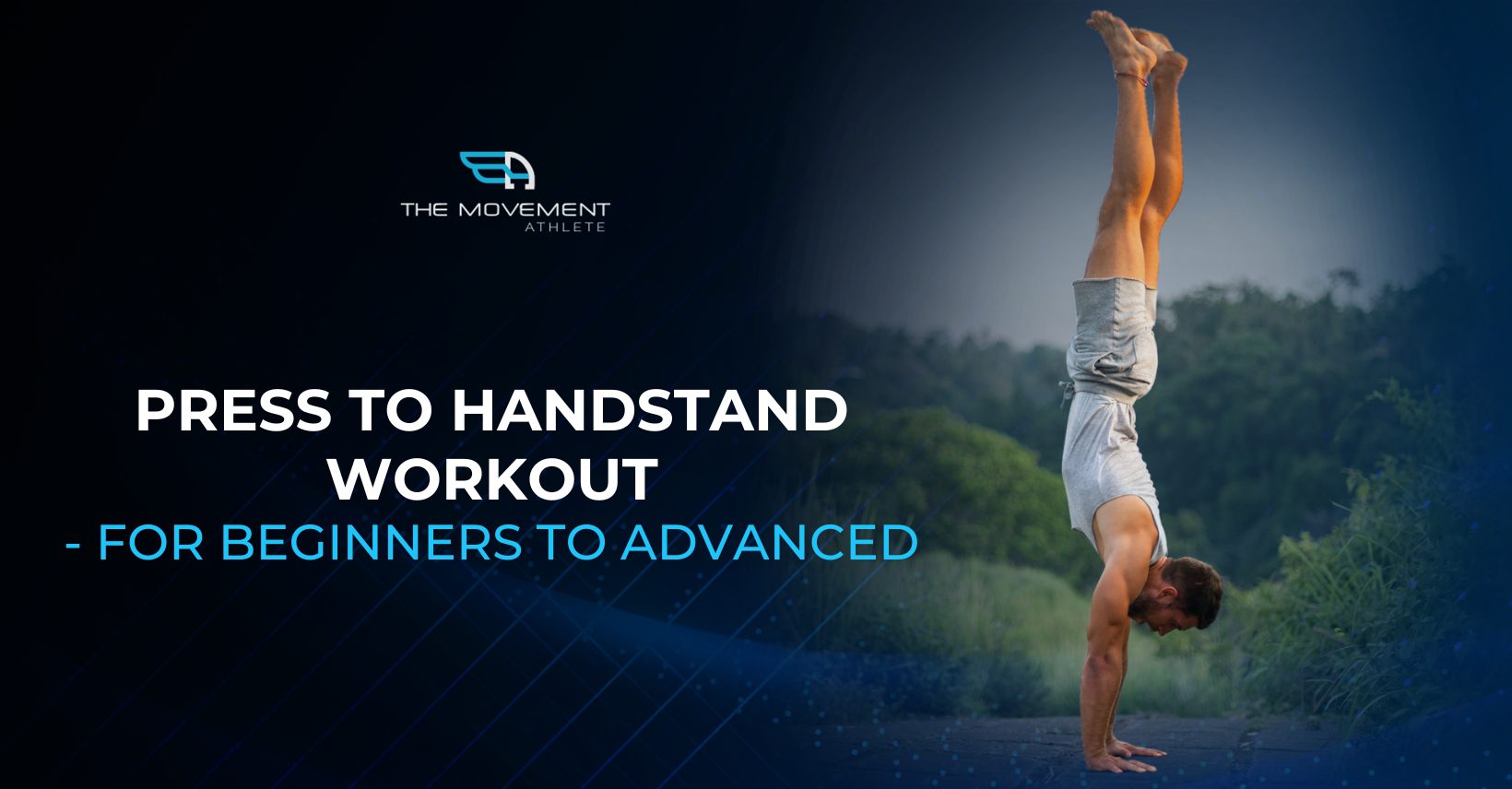
Join the tribe of Movement & Calisthenics Athletes – people just like you that are working with their own body weight to get strength, lose fat build muscle, recover from injuries and live their best lives!
You’ve got to work on your press to handstand directly if you want to learn them at a faster rate. Specificity is key.
Here’s a solid calisthenics workout that covers every aspect of the skill so you can train it safely and efficiently as possible.
Keep in mind to adjust the exercises base on your skill level.
🧐Training Schedule
Let’s first talk about the training schedule and how you can make it fit in your week. This workout is designed as a full-body workout specific for the press to handstand. Ideally, you would want to get at least 4 sessions per week and add at least one separate day dedicated for pulling exercises and one separate day for leg training.
⏬Here’s a sample of how your week can look like:⏬
MON: Press to handstand session 1
TUES: Pull day
WED: Press to handstand session 2
THURS: Leg day
FRI: Press to handstand session 3
SAT: Press to handstand session 4
SUN: Rest
With this format, you’re geared towards maximum development for press to handstand. You can decrease your sessions to 2 – 3 times per week depending on your recovery,
Notice the decrease in number of pulling sessions. We want to focus primarily on skill acquisition for this workout. Although your pulling strength might stagnate for a bit, this will allow your body to recovery better so you can focus on press to handstands.
Don’t worry. It doesn’t mean your going to lose pulling strength. It can be maintained with at least one session per week.
Adding two sessions of pull day might negatively affect your recovery which can hinder you from training press to handstands efficiently.
Taking a slight step backward allows you to make more meaningful progress for the specific goal you are currently pursuing.
🏃Warm-up
Like any other workout routines, warm-ups should be always integrated at the start,
Warm-ups are crucial not only for satey, but to also improve your body’s capacity to perform the workout. It primes both your body and mind for the upcoming demanding task. Warm-ups help your body transition from rest to movement.
☝️Don’t skip your warm-up. It can be tempting, especially with the low-impact movements which seems only seems like negligible. But each warm-up exercise is important for performance.
If you want to see progress in your handstand press journey in a safe manner, then do your warm-up routine.
Read more here: 📍The Ultimate Guide to Calisthenics Warm-up
But not all warm-ups are created equal. There are two types we need to do.
⚡️General warm-up
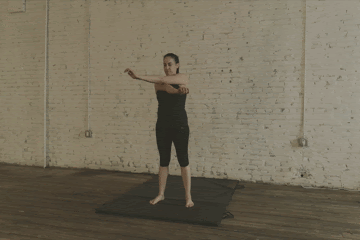
Simple arm swings are good for improving shoulder joint lubrication.
The first part should be a general warm-up. This means helping raise your heart rate so that you can improve your general blood circulation for your workout.
General warm-up can be a light walk, a 5-minute on a threadmill and/or joint rotational exercises. These movements should be active and can raise your heart beat to a more working condition.
Here’s a 10 minute example of a general warm-up for press to handstand:
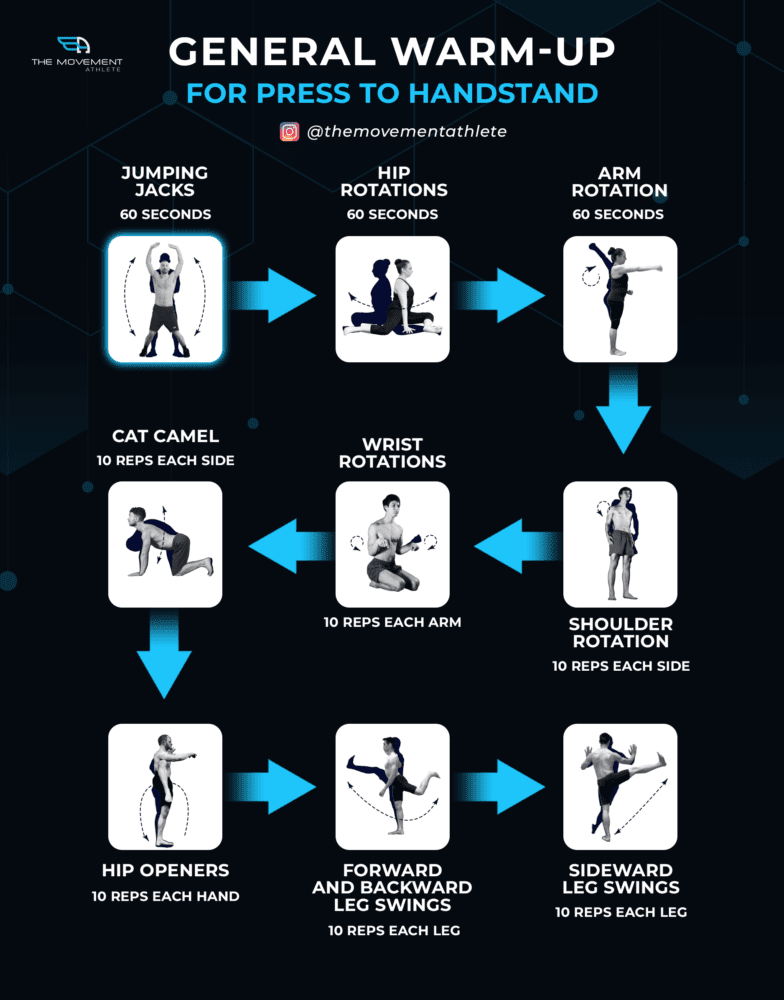
Single set
☑️60 seconds – Jumping jacks
☑️10 reps each side – Hip rotations
☑️10 reps each arm – Arm rotation
☑️10 reps each side – Shoulder rotation
☑️10 reps each hand – Wrist rotations
☑️5 reps – Cat camel
☑️10 reps – Hip openers
☑️10 reps each leg – Forward and backward leg swings
☑️10 reps each leg – Sideward leg swings
⚡️Specific warm-up
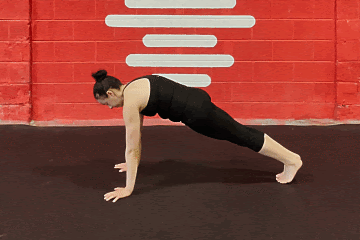
Scapula push-ups are excellent for activating the shoulders and scapula.
Specific warm-up focuses mainly on joint preparation and low-intensity movements that are specific to the workout we’re going to perform.F
For example, since we’ll be performing a press to handstand workout, then the specific warm-up should focus on improving our muscle activation, skill pathway, and technique.
While press to handstand is a full-body skill, performing squats to activate the quads and glutes aren’t as effective.
Instead, you would want to focus on performing fire hydrants and hip openers which also target the same muscle groups but has more transferability to the skill.
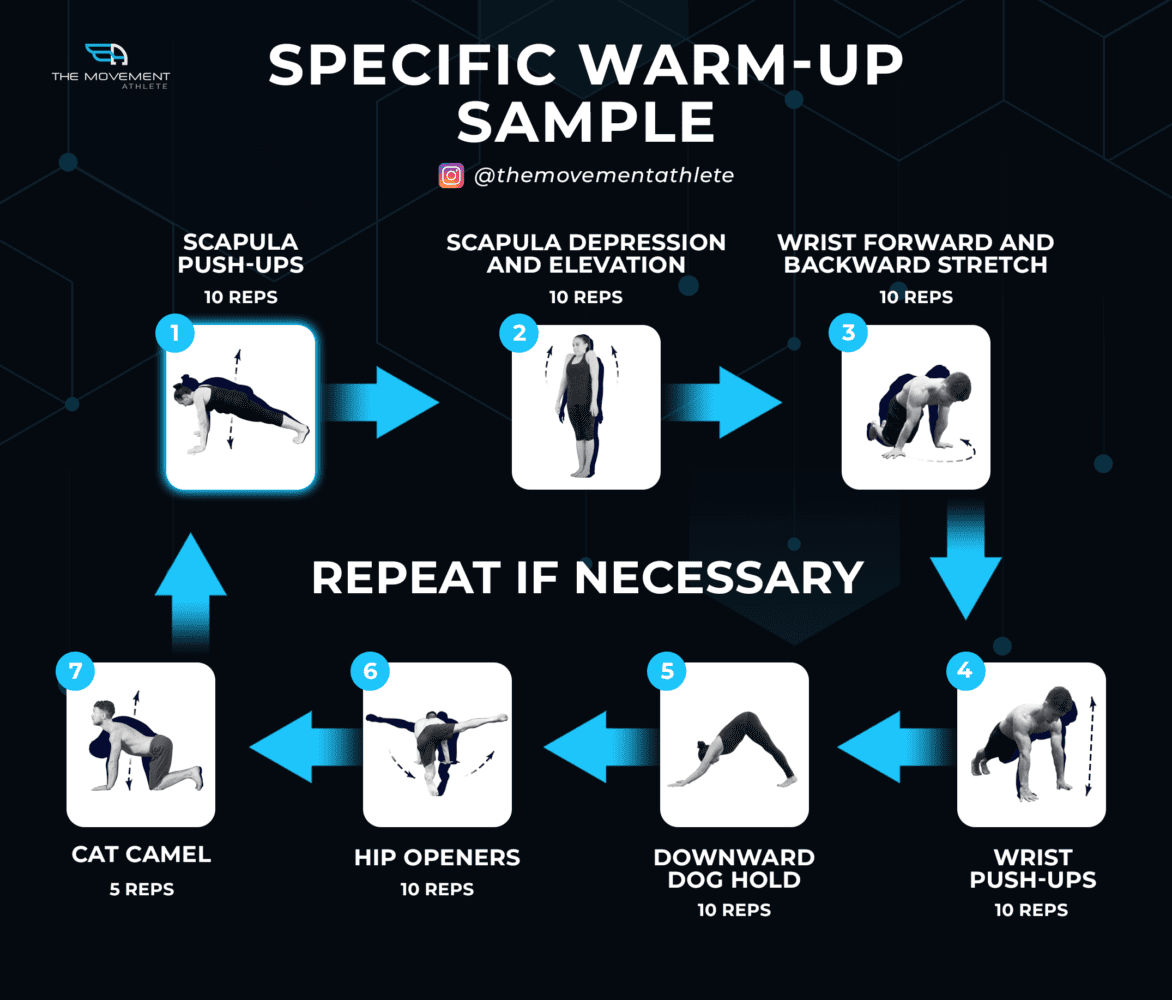
☑️Scapula push-ups – 10 reps
☑️Scapula depression and elevation – 10 reps
☑️Wrist forward and backward stretch – 10 reps
☑️Wrist push-ups – 10 reps
☑️Downward dog hold – 10 reps
☑️Hip openers – 10 reps
☑️Cat camel – 5 reps
Press to Handstand Workout💪
There are many ways you can structure your press to handstand workout.
You can take supersets in which you group together exercises and perform them consecutively before resting. You can perform also traditional sets by doing one set of exercise before resting.
You can divide bent-arm days and straight-arm days throughout the week or split them into skill training and general strength and muscle development training.
In our workout that we also implement in The Movement Athlete app, we’re going to split the workout based on the four major categories:
- 🤸 Skill – technique, movement pathway, and mobility development
- 👊 Strength – Specific and general strength (core exercise progression)
- 💪 Muscle – Targeting specific muscle groups for strength
- 🏃 Endurance – Building up working capacity
These are further explained in this section: 📍The Best Press to Handstand Progressions
Skill🤸
Freestanding handstand
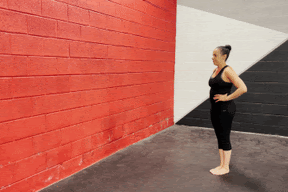
3 sets of 20 – 30 seconds – 90 sec rest
After our warm-up, we’re going to perform the prerequisite, the freestanding handstand, to prime our muscles for the press to handstand.
We start of with this exercise since it’s relatively low-intensity especially if you already have a good mastery of this skill. It’s the perfect exercise to begin with because it targets your shoulders, core, wrists, balance, and technique that translates well to the goal skill.
The freestanding handstand is also a part of the end range of the press to handstand.
We want to train this exercise when we’re still fresh. If we place this exercise at the end, it’s going to be more challenging to maintain the balance even if you’re muscles as still capable of doing the work.
In addition, we want to train good habits with this technical skill. Performing when fatigue sets can lead to form breakdown which is not ideal for muscle memory and skill development.
For better guidance on this skill, you can read up here: 📍The Ultimate Guide to Freestanding Handstand
☝️How to Perform
- From standing, step one leg forward and raise your arms overhead.
- Place your hands on the floor by leaning forward and hinging at the hips.
- Swing the back leg upward and push the forward leg off the floor to gain momentum into the handstand.
- Catch the peak handstand position and find the straight final position.
- Hold the position for a specified time.
🎯Coaching Pointers
- Shoulders fully elevated
- Arms locked out
- Posterior pelvic tilt
- Shoulders, hips, wrists, legs are stacked
- Aim to adjust the balance using only your fingers
- Grip the floor by pulling your finger tips toward your palm
- Aim to put the balance in the center of your palm
Fire Hydrant
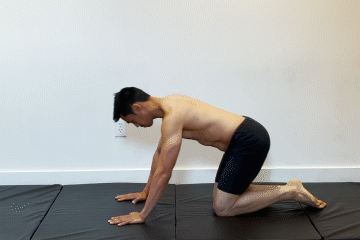
2 sets of 5 reps on each side – 60 sec rest
This exercise is perfect for priming the lower body. It opens up the hips and activates your hamstrings, quads, and glutes in a full range of motion.
Fire hydrants primes the lower body for the active flexibility/mobility requirement for the pressing motion. The better you can activate and control your lower body in a wide range of motion, the better you can get into position for pressing.
☝️How to Perform
- Get into a quadruped position.
- While maintaining bent knees, lift one leg backward then pause briefly.
- Move it to the side then pause briefly.
- Lower down with control.
- Then reverse the motion for 1 rep.
- Repeat for reps.
- Repeat for the other leg.
🎯Coaching Pointers
- Slow and controlled movement
- Engage your leg and hips to facilitate the movement
- Arms straight and locked out
- Move through your maximum range of motion
- Depressed scapula
- Engaged core
- Posterior pelvic tilt
Supine press
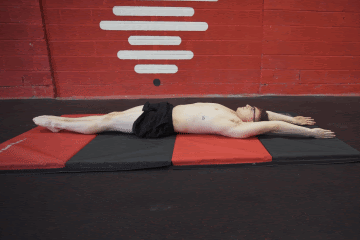
3 sets of 5 reps – 90 sec rest
Coordination is crucial for press to handstand. It’s one thing to move your legs into a straddle. It’s different when you combine the timing of rolling your spine while compressing your hips and opening into a straddle with the correct timing.
Supine press is another low-intensity exercise that mimics the pressing position of the skill without the difficult strength component.
In this exercise, we get to ingrain in our system the movement pathway of how your body (minus your shoulders) should move when moving into a press to handstand.
☝️How to Perform
- Begin in a supine position.
- Raise your arms overhead as if performing a handstand.
- Roll your spine and compress your hips until your feet touch the floor over your head.
- Slowly lower back down your lower back as you simultaneously open your legs into a straddle.
- Continue opening until your lower back touches the floor, then slowly close your legs back together.
- Repeat for reps.
🎯Coaching Pointers
- Avoid arching the lower back at the bottom position
- Full body tension
- Get as a wide straddle during the other half of the sequence
- Maintain overhead arms as if performing a handstand
Strength👊
Standing straddle walks

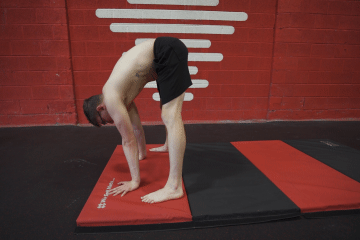
3 sets of 10 reps (5 reps forward them 5 reps backward) – 3 min rest
For this workout, we’re going to focus on the initial phase of the press. This is the most common sticking point since it’s the most mechanically disadvantageous position during the press to handstand especially if you don’t have a good level of lower body mobility yet.
As mentioned in the first section of this guide 📍How to Press to Handstand – Technique & Prerequisites, in order to lift your lower body, you must be able to lean far forward enough to raise your hips on top of your hands. The easier you get your hips in this position, the more efficient you can press up.
Pressing up isn’t about lifting your legs. It’s about finding that balance while maintaining the overhead shoulder angle. In such shoulder position, the delotoids aren’t used to much loading.
This is a specific strengthening exercise for press to handstands which straight arms. Once we get proficient with this exercise, it’s going to be much easier to generate lift off.
☝️How to Perform
- From a standing position, straddle your legs slightly wider than your hips.
- Bend over by hinging at the hips and maintaining straight legs.
- Place your hands in front of you on the floor.
- Shift your weight forward.
- Raise your hips and compress your lower body closer to your chest. This should automatically lift off your feet.
- Move your feet closer to your hands and plant them on the ground.
- Move your hands further again from your feet.
- Repeat the motion as if walking.
- Repeat the motion but in reverse for a backward “walk”.
🎯Coaching Pointers
- Elevated shoulders
- Hands shoulder-width or slightly wider depending on preference
- Focus on positioning the hips correctly to be able to lift off the feet
- Locked out arms
- Full body tension
- Use a bit of momentum when first working with the exercise
- Gradually go slower with the movement
- Gain more control at the bottom phase overtime
- Aim to add a slight pause when hovering the feet off the floor
Muscle💪
Pike push-ups
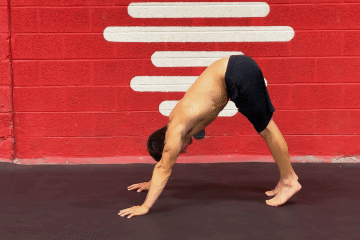
3 sets of 8 reps – 2 min rest
In the press to handstand, we mostly working on our front deltoids. This takes most of the loading especially in such a wide range of shoulder flexion.
Pike push-ups, although performed with bent arms, develops strength and muscle for the front delts. This has a general and specific transferability for press to handstand.
The stronger and bigger this muscle gets, the easier we can perform the strength element of press to handstand.
In addition, pike push-ups improve your chest and tricep strength that also helps in press to handstands.
☝️How to Perform
- Begin in a downward dog hold position.
- Move your weight into your hands.
- Lower your body by bending your elbows.
- Lower down until your head lightly grazes the floor.
- Push back up to the downward dog position.
- Repeat for reps.
🎯Coaching Pointers
- Full shoulder elevation at all times
- Keep your elbows within the scapular plane (don’t let it flare outward too much)
- Maintain your weight on your arms especially at the downward dog position
- Don’t lean backward unto your legs
- Push back to full lock out arms at the starting position
- Full body tension
- Get a diagonal angle when lowering down
- Avoid changing the angle of the torso when pushing back up
- Go slower or elevate your feet to make the exercise more challenging
Decline push-ups
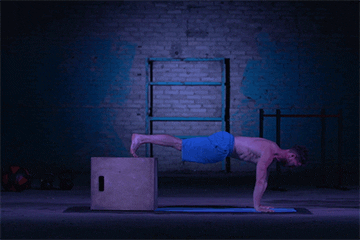
3 sets of 15 reps – 2 min rest
We can overload our shoulder by perforeming decline push-ups. This is basically a regular push-up with elevated feet. The elevation shifts the emphasis of the exercise from the chest more to your shoulders.
You can think of this as an easier pike push-up since it gets more assistance from your triceps and chest. We will use this exercise to add more training volume on your shoulders which is crucial for muscle growth.
☝️How to Perform
- Prepare an elevated surface.
- Place your feet on top of the elevated surface.
- Position your body into a push-up position.
- Lower your body down until your chest lightly grazes the floor.
- Push back up to the starting position.
- Repeat the push-up motion for reps.
🎯Coaching Pointers
- Straight arms at the top position
- Tuck your elbows close to your body
- Maintain a rigid body position
- Posterior pelvic tilt
- Depressed shoulders
- Let your scapula retract naturally as you lower down
- Start with a lower elevation when first starting out then gradually increase height
Endurance🏃
Wall handstand
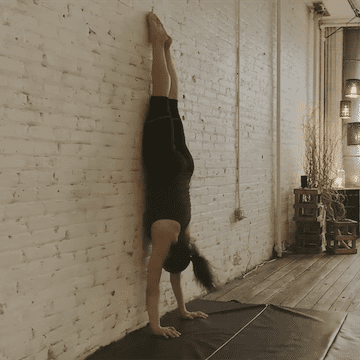
3 sets of 45 -60 secs – 90 sec rest
Wall handstand will help further develop your working capacity with overhead shoulder flexion. This will improve your freestand handstand and press to handstand.
We use the wall to remove the balance factor so we can add more working capacity without worrying about balance. Then our muscles will be able to hold for longer periods of time, which will improve their endurance.
You can choose either a back to wall or belly to wall handstand.
Back to wall for easier entrance. Belly to wall to force yourself into a better handstand alignment. Both are excellent options. You can also switch up the technique from time to time.
☝️How to Perform
- Jump into a handstand with your body close to the wall.
- Hold for a specified time.
🎯Coaching Pointers
- Straight body alignment
- Shoulders elevated
- Posterior Pelvic Tilt
- Breathe
- Keep pushing away from the floor
- Full body tension
Hollow body hold
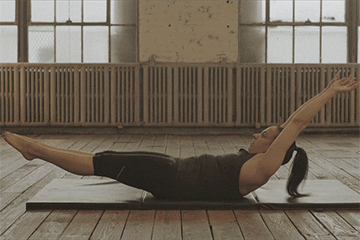
3 sets of 30 – 60 secs – 90 sec rest
We always want to further improve our core which acts as a stabilizer in press to handstand and many other calisthenics exercises.
This is why in the TMA app, we included core training (not only abs!) in the calisthenics fundamental. Every move requires a certain degree of core activation. Some have a heavier requirement. Some doesn’t have much. But all requires it to be able to perform any movement efficiently.
The hollow hold best serves to our purpose since it mimics the position of the handstand. Our core will get used to this position for better handstand control. Additionally, this improves press-to-handstand performance.
☝️How to Perform
- Begin in a supine position.
- Raise your arms overhead.
- Tilt your hips backward to flatten the lower back against the floor.
- Simultaneously lift your arms and legs off the floor by a few inches.
- Hold for a specified time.
🎯Coaching Pointers
- Bend your legs or arms to make the exercise easier
- Breathe
- Actively engage your core
- Full body tension
- Squeeze your glutes and quads
- Point your toes for additional leg tension
- Raise your arms or legs if your form starts to breakdown too early
Sitting straddle leg lifts
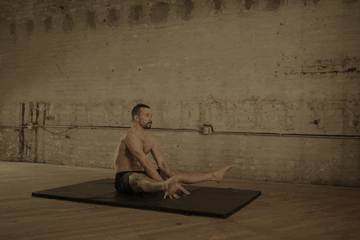
3 sets of 8 reps- 2min rest
Here’s a core/lower body workout that guarantees cramping in your first try!
Sitting straddle leg lifts are one of the best exercises you can do for core compression. This targets your hips, core, quads, glutes, and stretches your hamstrings in a range of motion transferable to press to handstands.
Cramping usually happens because we’re not used to the movement pattern and loading. Overtime, your body will get used to the motion and the cramping will go away.
Be sure to include this exercise if you’re dedicated to mastering the press to handstand.
☝️How to Perform
- Begin in a seat position.
- Spread your legs into a straddle about 90-degrees.
- Place your hands in front of you.
- Lift your legs upwards simultaneously.
- Lower down with control.
- Repeat the leg motion for reps.
🎯Coaching Pointers
- Straight legs
- Point your toes for added leg tension
- Think of your hips as a part of your legs to facilitate the movement
- Move your hands further from your body to make the exercise harder
- Do the range of motion you can only perform
- Add hold time at the peak range of added difficulty
- Straight back
💧Cooldown
We end our session with flexibility work with high focus on the pancake straddle position.
Why?
Because this is exactly the position we want to achieve when performing the press to handstand.
Static stretches are placed at the end of the workout as research shows that static stretches can potential affect the muscles’ strength capacity for the main workout. In the review, it’s said that it’s can be recommended to implement short static stretches (less than 60 seconds) during warm-up for non-high performance athletes. But we’ll stick to the safer side and add it at the end since dynamic stretches can also help in flexibility for an upcoming workout without potential risks.
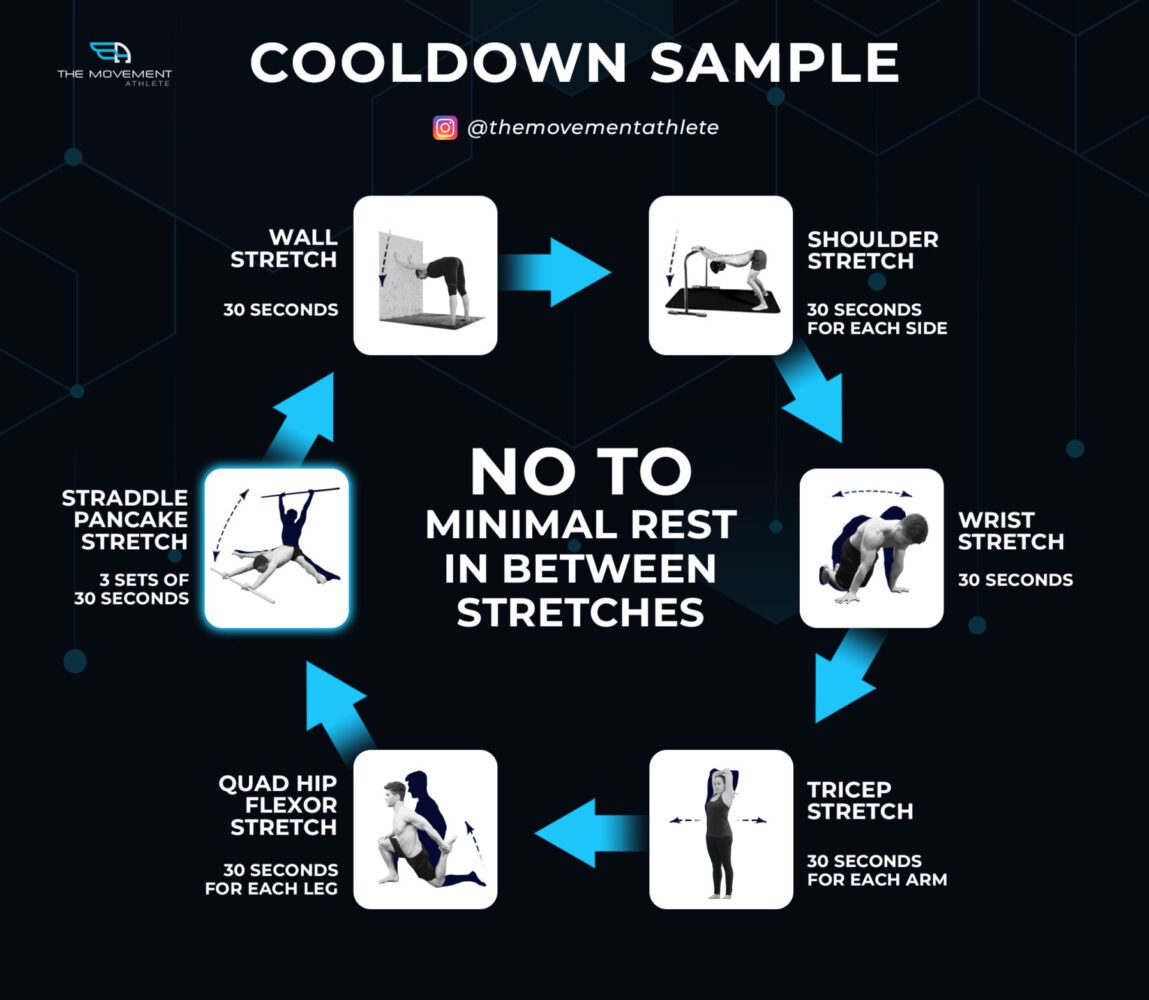
☑️Straddle Pancake stretch – 3 sets of 30 seconds (Go deeper into your stretch after each set)
☑️Wall stretch – 30 seconds
☑️Shoulder stretch – 30 seconds for each side
☑️Wrist stretch – 30 seconds
☑️Tricep stretch – 30 seconds for each arm
☑️Quad hip flexor stretch – 30 seconds for each leg
✨Workout Format
Key pointers:
- Workout 3 – 4 times per week
- At least 24 hours of rest given that near maximal effort is exerted
- Always do your warm-up and cooldown to maximize progress
- Find the balance for each exercise that’s challenging yet you can achieve the minimum number of reps and sets without going into failure (you can no longer do any reps)
- Listen to your body. If you’re feeling aches and pains, you might need to take longer rest in between sessions or decrease your effort in your training
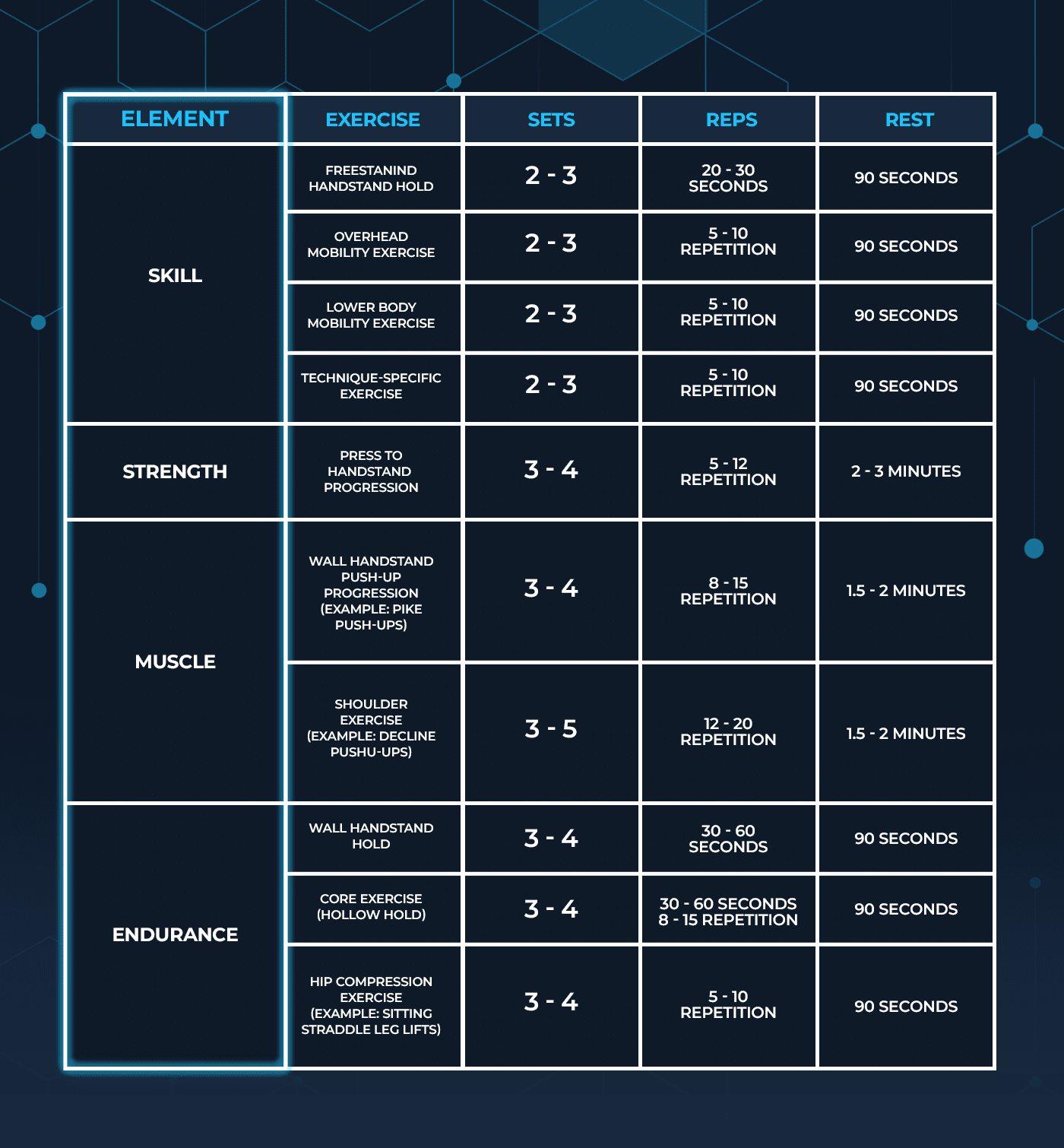
🤸Workout Structure Variations
Aside from the traditional sets provided in the workout above, you can also make some slight alterations to this type of workout.
Below are examples of a superset version of this workout. A superset is when you perform two exercises consecutively or having a brief rest in between each exercise then resting for the longer period after the second exercise. This is an excellent option for those who want to cut their training time duration.
We’ve provided examples for each level: beginner, intermediate, and advanced:
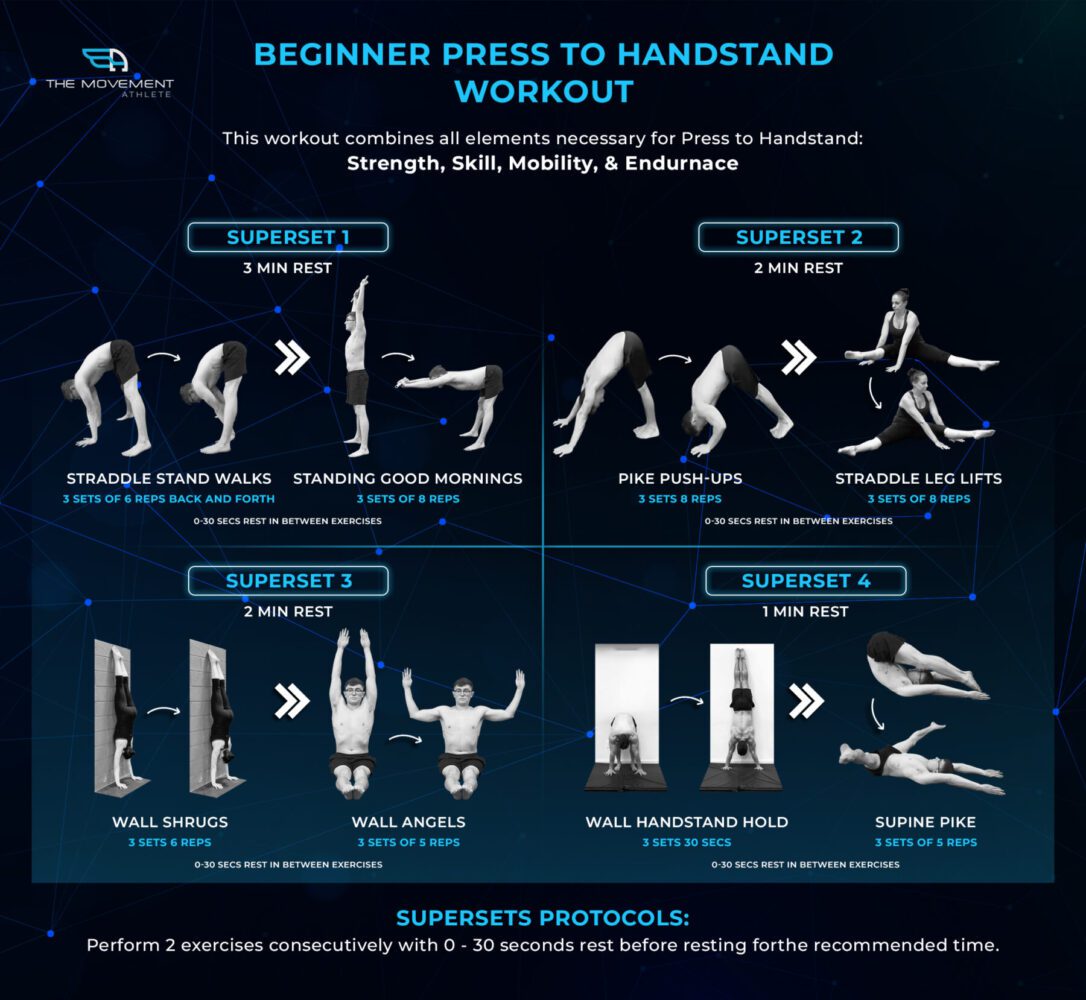
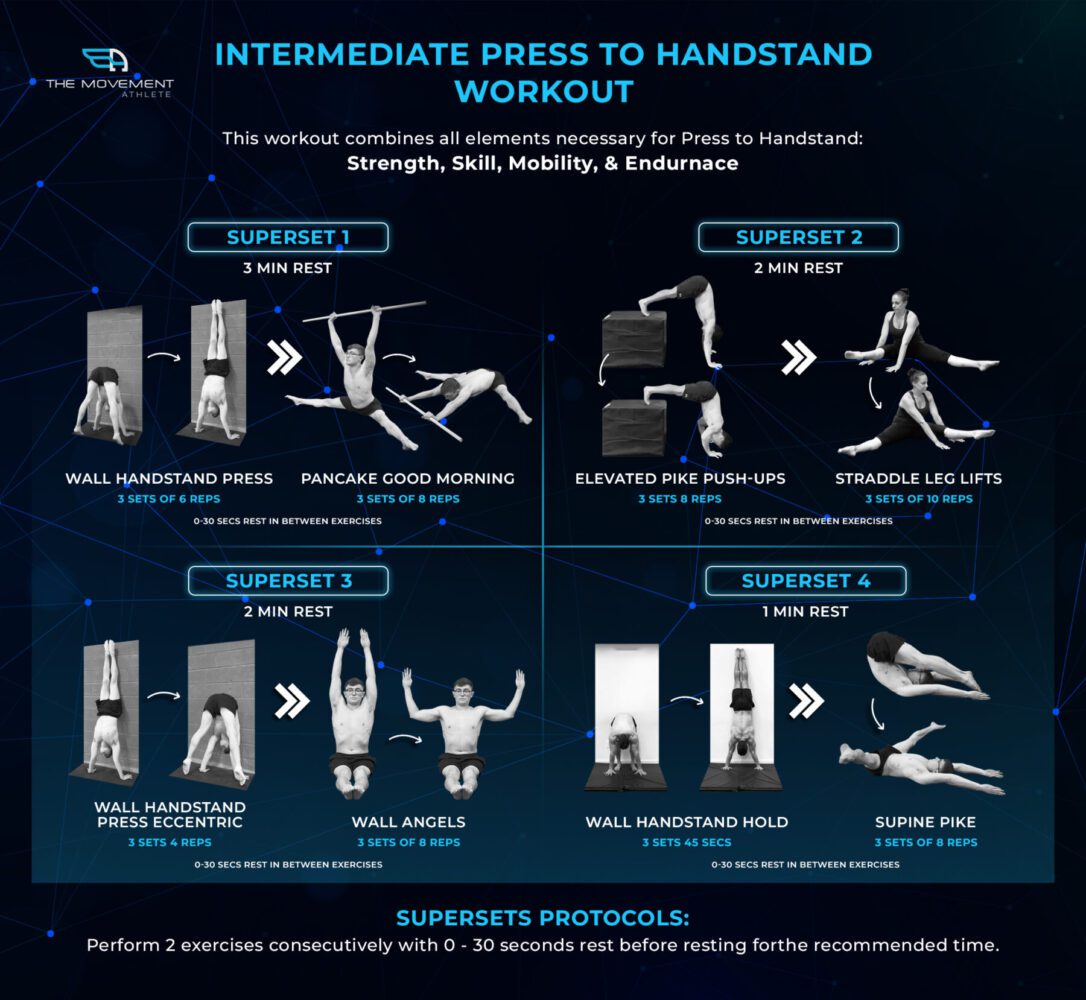
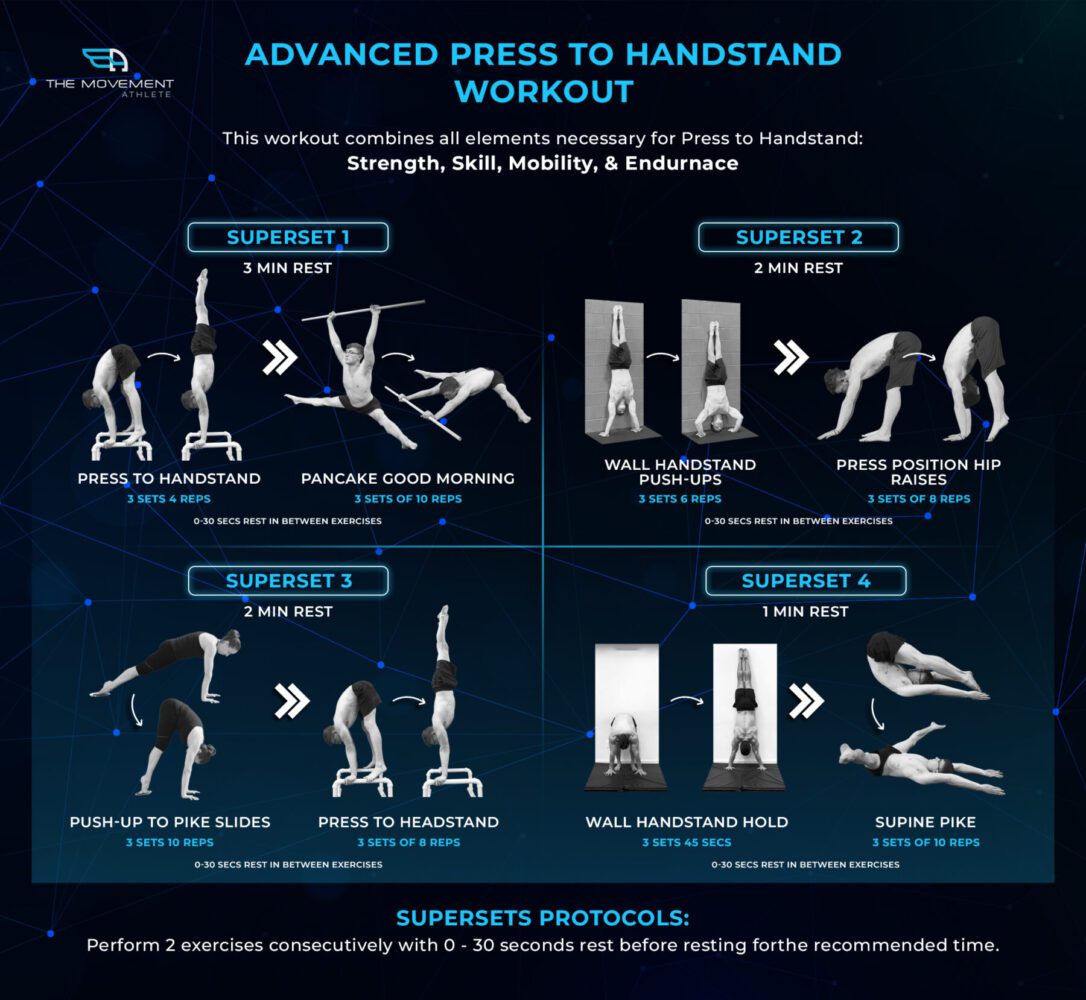
📌Takeaway
There are multiple ways you can train for press to handstands. The example above is just one of them. With that program, you can already have excellent progress in your press to handstand.
Likewise, you can also get meaningful progress with other training structures.
However, the best training program is still something that is PERSONALIZED based on your current skill level, lifestyle, and goals.
For example, if you want to train press to handstand, your workout should be geared towards this goal to get the most from your workout. In addition, your workout should fit smoothly with your schedule so you can stay consistent with your training while not clashing with your other responsibilities.
🔥Workouts should be tailored, adaptive and enjoyable.
If you need a workout that fits exactly these descriptions above, then begin try out the assessment below. This will show the best starting point for you to begin your calisthenics journey.
BEGIN YOUR ASSESSMENT NOW!💯